Summary
Meter Collars simplify the process of adding Solar Panels or Batteries to our houses because they are neither Behind The Meter nor Front Of The Meter but rather At The Meter. I knew very little about electric meters, or meter collars; below I capture what I have learned.
Disclaimer: I am not an electrician; feedback and corrections are always appreciated and some statements are simplifications. The material below is to help educate consumers like myself so we can make more informed decisions and can have better conversations with involved parties.
Background
If you are interested in residential storage you have heard about Tesla’s PowerWall 3, and probably are aware that its Backup Switch reduces its installation cost. If you are in SDGE territory, you may know about the Renewable Meter Adapter that costs $1326 installed and simplifies connecting your rooftop solar. If you live in Vermont and elsewhere you may have read about how ConnectDER helps you add an EV charger to your existing 100A panel. If you track recent renewable news you may have heard about the Span Edge product that can help quickly add manageable load to an existing house. What all these products have in common is that they are leveraging a meter collar, a device installed between an electrical meter and its base. This post explains what a Meter Collar is, how it works and how it provides new opportunities to reduce the cost of our house electrification journey.
Added: Turns out that meter collars, properly Meter Adapters, are part of the agenda topic 47 of the CPUC voting meeting on May 15th. This is part of CPUC proceeding R-19-01-011, Building Decarbonization.
Update: Agenda topic was moved to June 12th, 2025
The Basics: Panels and Meters
Electrical Meters
Electrical Meters are those glass domes sitting next to or in our panels. Here is our 200 Amp panel; we have an FM2S meter designed for a split-phase 200A, 240V, 3-wire service that plugs into a form 2S meter socket.
The Meter and the Panel
We get the electricity from our distribution grid (see A close Encounter with a Utility Pole). PG&E’s 3 wires go through the meter and then supply the electrical panel

The panel is the responsibility of the house owner but the meter is the responsibility of the utilities.
Meter Bases
The interface between the meter and the base is mostly standardized. Bases vary depending on the voltage, amperage, and type (1 or 3 phase) of the service. Single family residences in PG&E territory seem to mostly use the form 2S base which has 4 jaw blades, two in, two out.
Here is a video showing work on a 2S utility meter. Note the insulating gloves; the utility side of the meter base is always “hot” and the wires are always connected to the utility distribution grid.

Here is the corresponding line diagram. Note there is a thin ground line; below we will see how ConnectDER requires its collar to be grounded using that.
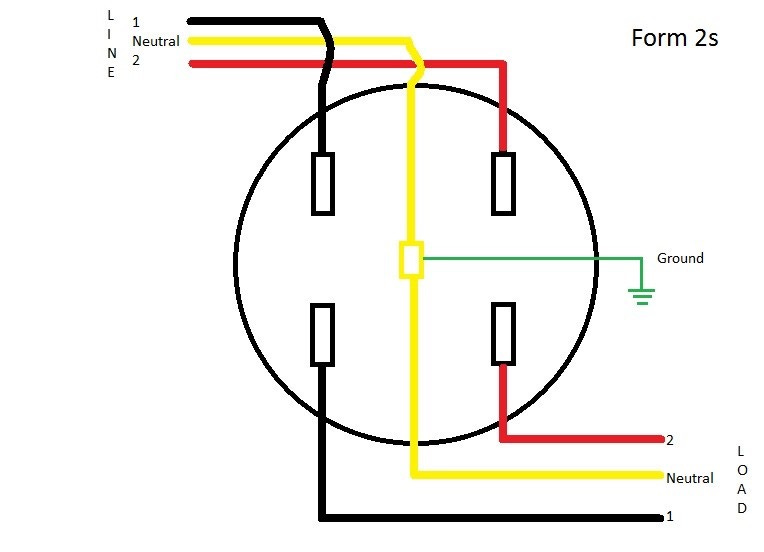
Below is a different base, a Form 12S, which has a grounded 5th jaw; photo and line diagram.
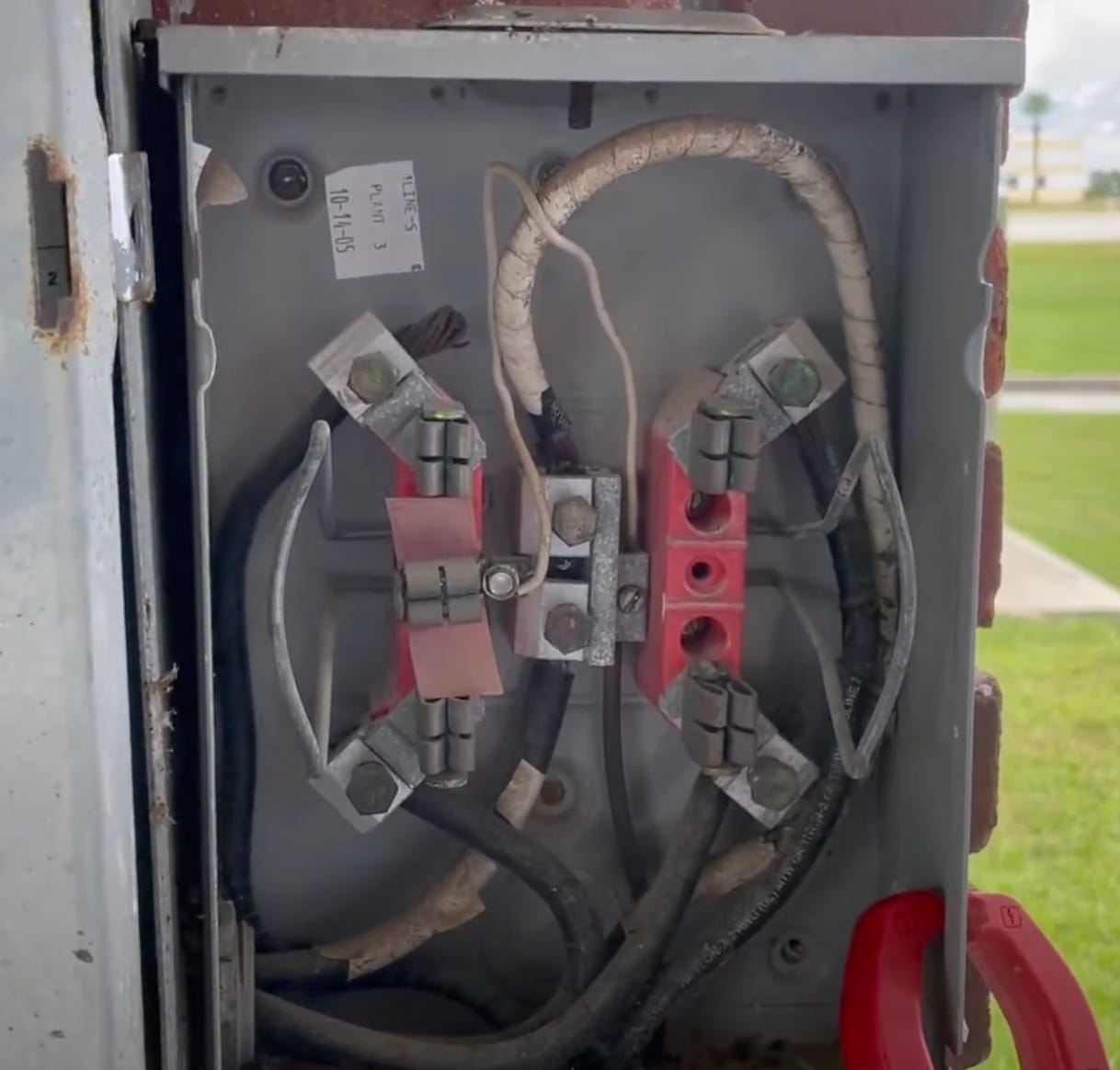
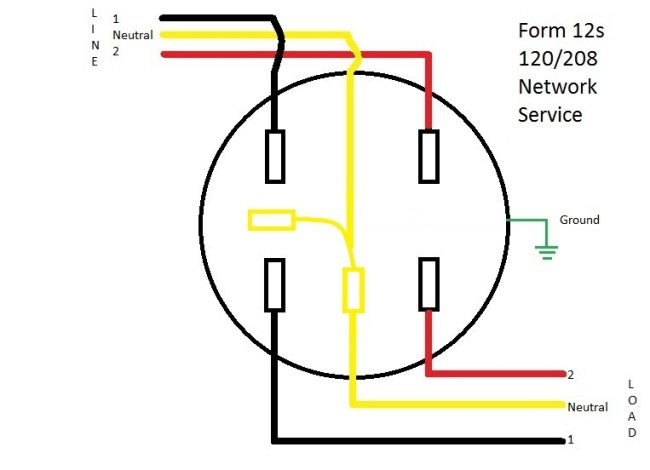
And here is the line diagram of a Form 4S, where the service wires do not go directly into the meter but instead current transformers (CTs) are reading the current. A Form 4S would be needed for a service above 400A.
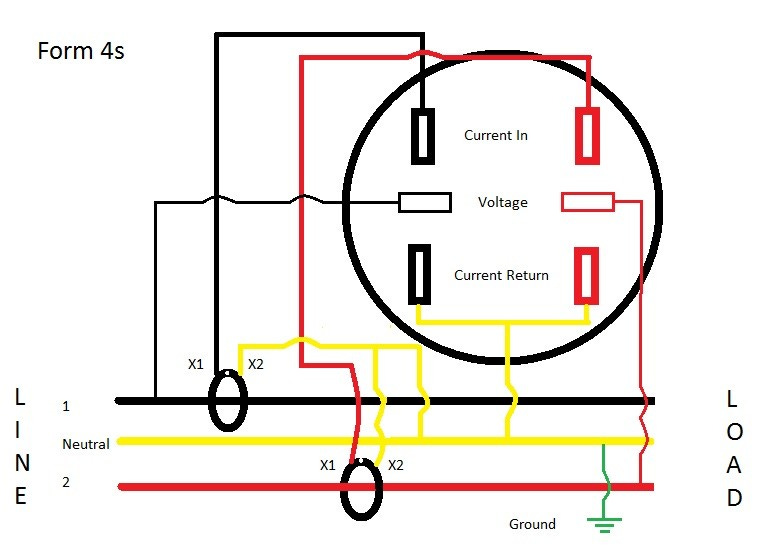
A PG&E Smart Meter
Turning to the other side, below is the inside of a PG&E smart meter:
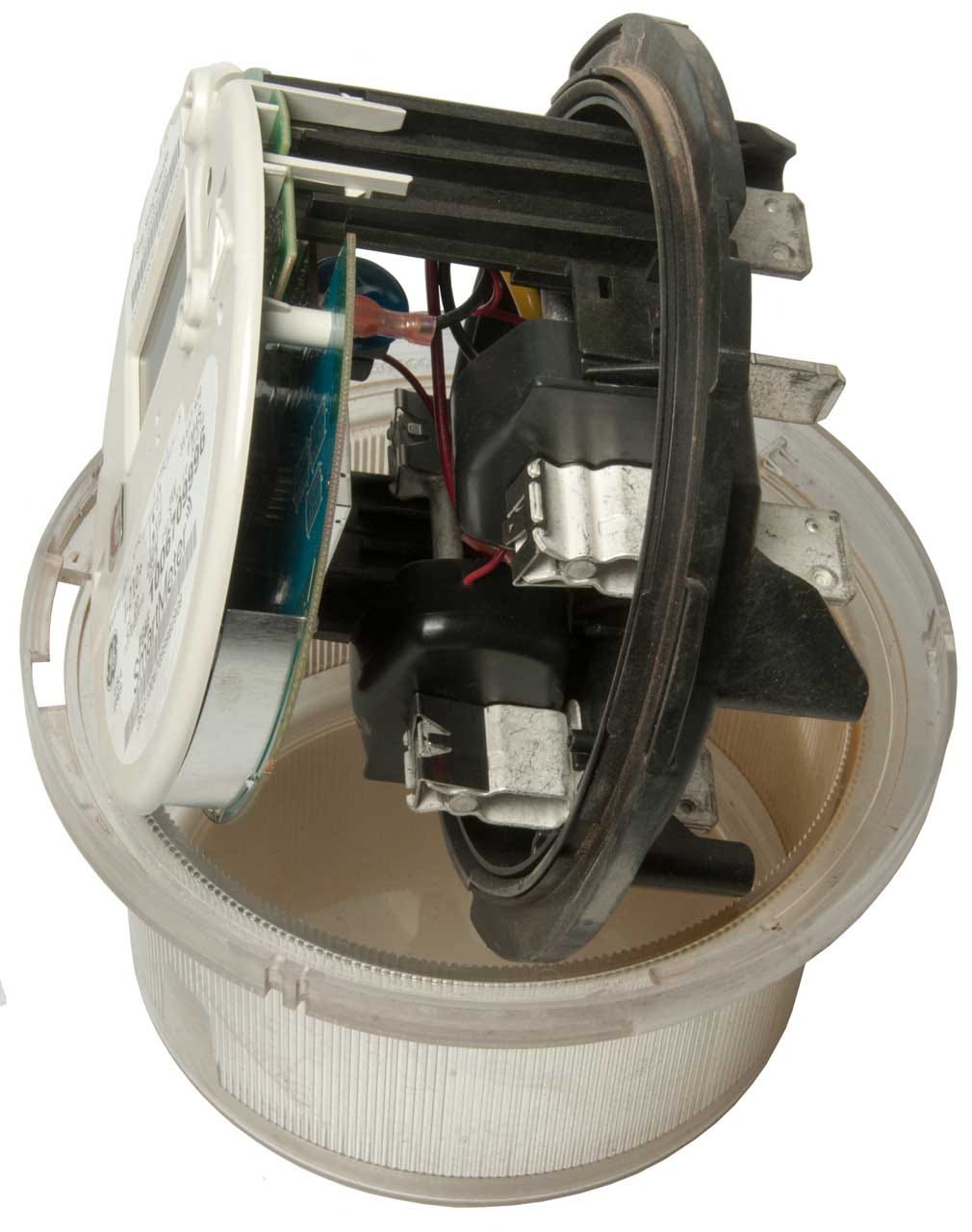
This meter has 6 lugs. Two in, two out. There are two “extra” plugs that are unused - I suspect they are used in other variants of the same product, possibly in a meter for a form 4S.
Meter Collars / Meter Socket Adaptors
The beauty of those four jaw blades is that you can sandwich something between the base and the meter. Over time there have been multiple uses of these “meter collars” or “meter socket adaptors” (NEMA US 80016-2022), below are two early examples.
Marwell’s Angle Meter Socket Adapter (1979) changes the meter's orientation for easier reading
Here is the 400-series surge arrester from Meter-Treater (since 1986)
Pros and Cons of Collars?
Meter collars have gained in popularity in the last couple of years. There are multiple advantages and some disadvantages.
Pros
No need to interact with or modify the house electrical panel
The physical connection is fairly standard (four jaws), although there are variations
The forms are documented in UL-414 Standard, and a forthcoming Suplement SB will provide additional guidance around distributed generation equipment
Connecting a collar is fast; just minutes. Plug, and perhaps add grounding (I’m clarifying that)
The utility employees are very knowledgeable about the meter base
PG&E Greenbook has a bunch of details, way above my pay grade!
The DER collar/adaptors below are all sitting “behind the meter” insofar programs like NEM and NBT and households get the corresponding benefits
With improvements in power and electronics, a collar can now package a lot of functionality that can be used in multiple ways
Disadvantages
The utility serving your house (e.g. PG&E) has to approve the product
Collars and DERs
ConnectDER
The first commercial reference I can find of meter collars used for Distributed Energy Resources is ConnectDER. The company started in 2011 and their first product was for Green Mountain Energy in 2015. ConnectDER collaborated with Tesla some time after that and they later worked with Siemens in an EV charger. The company has been ramping up their products, partnerships, and approvals significantly in the last 3 years.
The ConnectDER products can provide power only or provide power and usage data. The usage data can be used by the utility for improved planning.
ConnectDER’s current line up includes a Solar and an EV Adapter, and it is working on a product for stationary storage (IslandDER). I’ll use their products to expand on how things work (also see Installers page).
ConnectDER with Solar
This is the simplest ConnectDER product. The use case is self-consuming rooftop solar.

Permitting will require an interconnect from the utility but installing the collar is very fast. The installation requires one extra wire connection and it comes with some caveats (FAQ) but not much more.
ConnectDER with EV
The use case for ConnectDER with EV is connecting an EV charger (max 32A) directly to the collar, with a 100A panel and avoiding a panel update. The product monitors the consumption on the main panel and will adjust the EV consumption if needed to avoid exceeding the limits allowed by the panel (see FAQ). The connection also requires an extra grounding as with the Solar product.
ConnectDER with EV will work with other loads (and can support also V2X).

Utility Approval
The electrical design may be standardized but each utility (the US has 3000) has to approve it; this is non-trivial but ConnectDER has been making very nice progress. Below is their utility table (PG&E is working on it)
SDGE Renewable Meter Adapter
San Diego Gas and Electric has a neat meter collar intended for connecting rooftop solar. Called the Renewable Meter Adapter (RMA), it costs $1326 installed, includes the disconnect switch and it can serve up to 11.5 kW system. Permitting and installation are streamlined: less than a week from and online request the utility will come and will install it in less than an hour. The technology was developed by SDG&E in 2016 and it is now manufactured by Marwell Corporation .
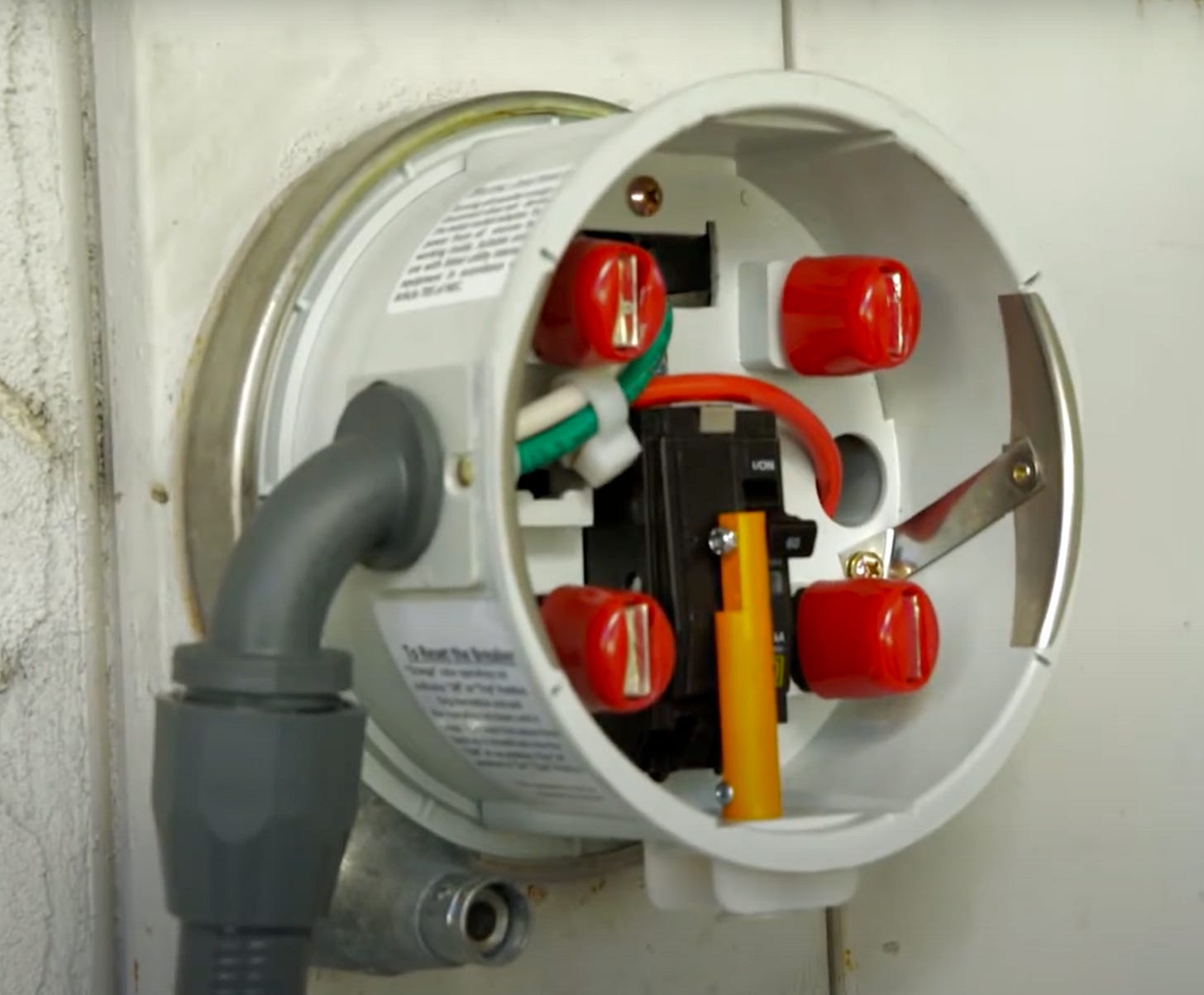
Tesla
Tesla originally only included a backup gateway to provide seamless backup of some essential loads using their PowerWalls. A backup gateway connects to the main panel but (details corrected from original post) with PowerWall 2, in 2021, Tesla introduced an additional solution using meter collars, the “backup switch”. PG&E supported the backup switch in early 2024, and by 2025 it has wide acceptance. The backup switch is optimized for a whole house backup. Here is a typical setup:
The backup switch can also be installed on a standalone meter panel. The installation is straightforward; here is an installation video including the wiring of the communication module.
Span Edge
SPAN Edge is a recent collar-based solution that provides a subpanel for essential loads. The system is designed to be installed in under 15 minutes by a technician and enables homeowners to add EV chargers, heat pumps, batteries and more without increasing a home’s electrical service.
This product is a collaboration with Landis+Gyr. It leverages the traditional Span functionality but it interacts directly with the utility. Check out the product announcement, and the reviews from: SolarPower World Online, Canary Media, and Volts.
More Collar-based solutions
Collars are a definitive differentiator and multiple vendors are leveraging this approach. Several of these systems already work with ConnectDER but vendors are looking into improved native solutions.
Enphase
Enphase’s 4Gen products includes a collar product (quick install guide) (list of utility approvals)
Franklin
Supposedly FranklinWH is working on a Collar system for California (see video)
SolarEdge
SolarEdge release states that their next generation products will include collar support
Lunar
Lunar Systems - TBD. I thought I had seen a reference to a collar product. I need to chase down again.

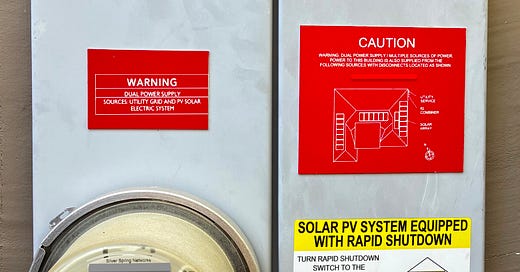





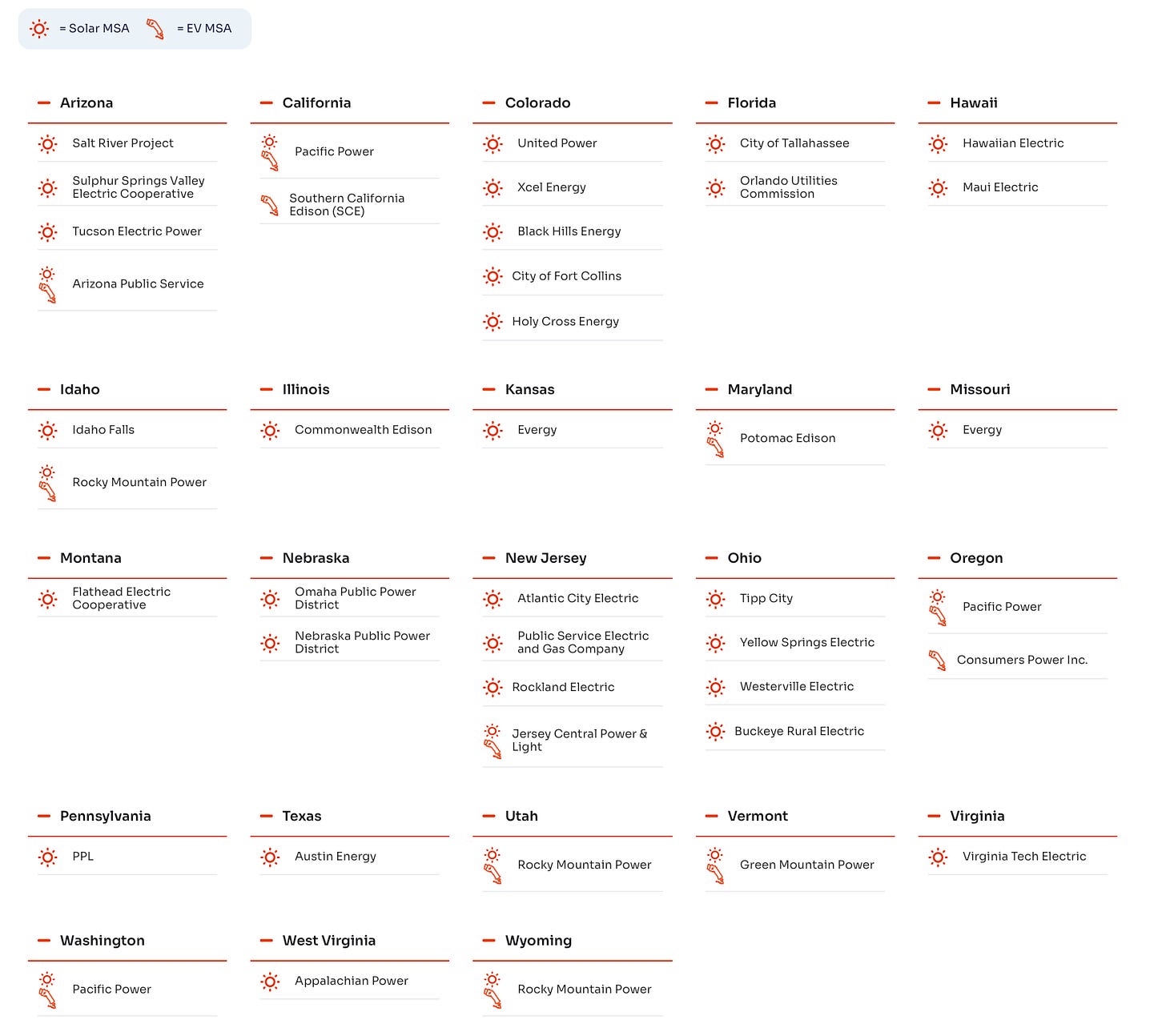
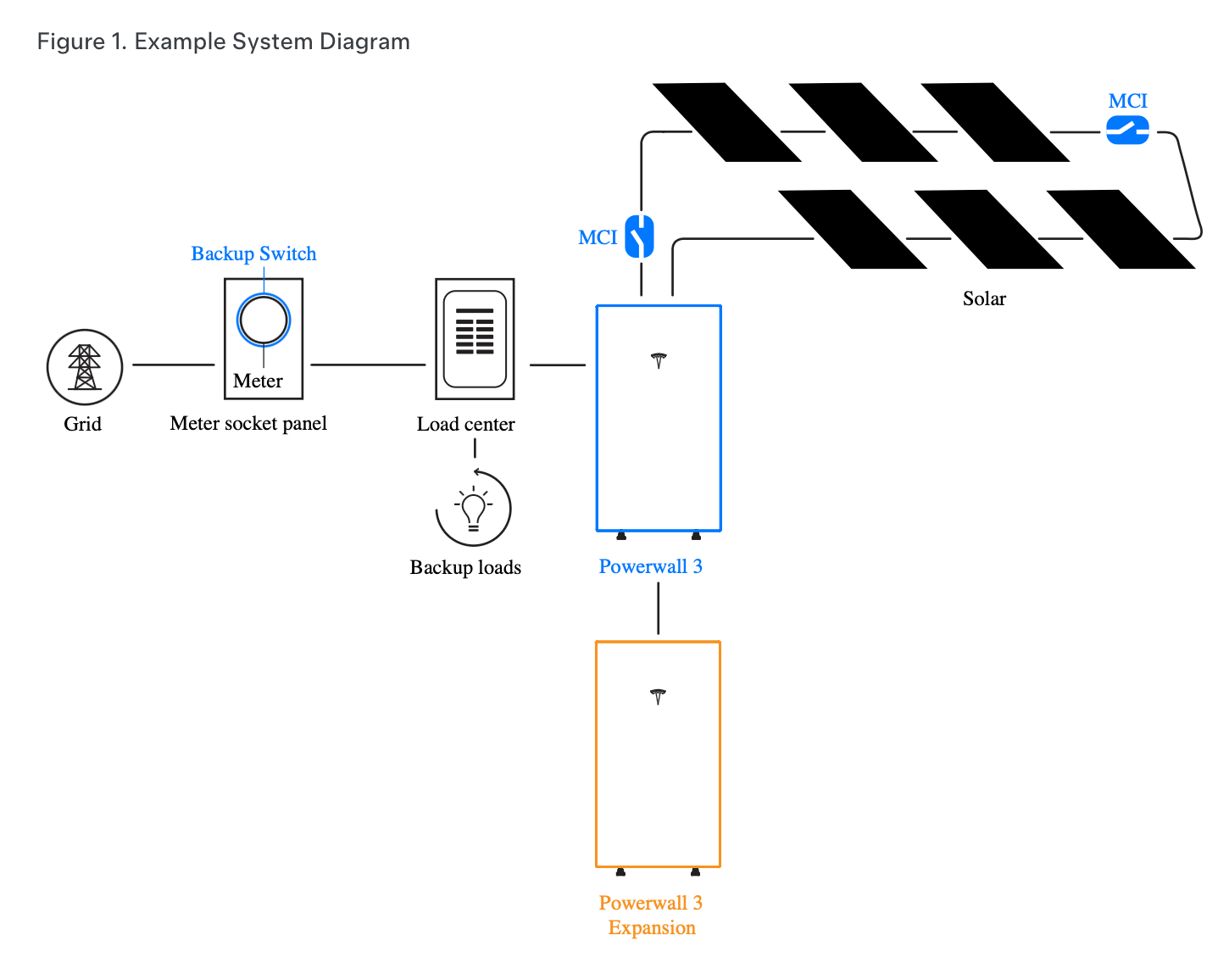
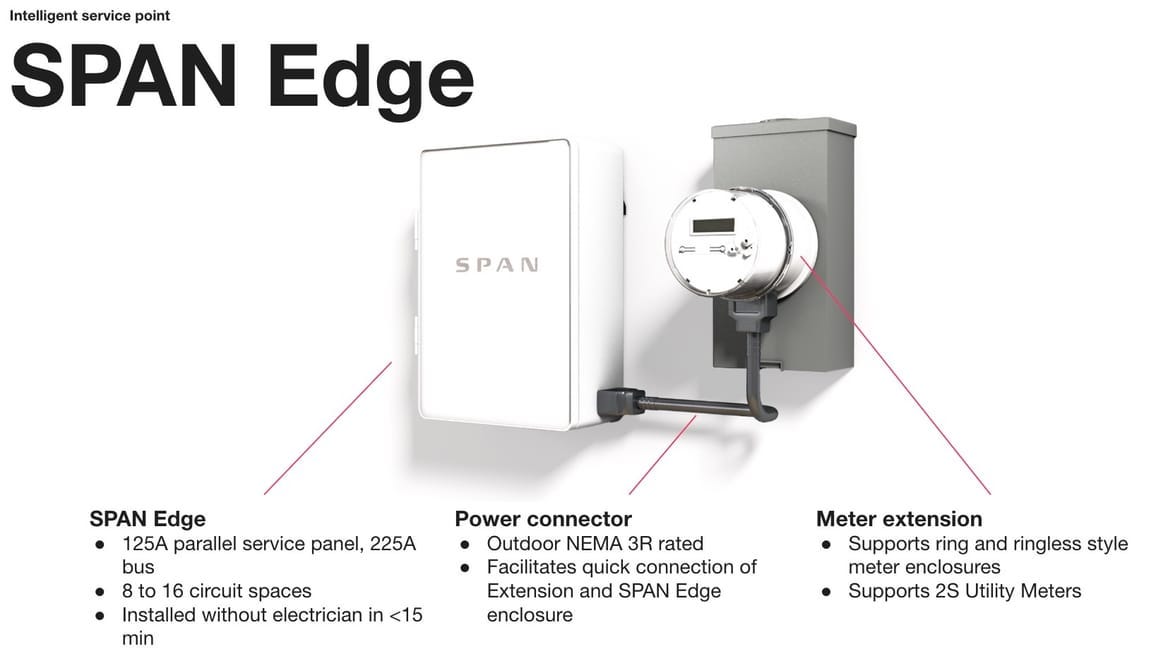
Thanks for this article. Super clear and informative!
After learning more about this, I realize I should have separated isolating (micro-grid able) from non-isolating MSAs (meter socket adapters).
Isolating: Tesla Backup Switch. ConnectDER IslanDER. Enphase IQ Meter Collar
Non-Isolating: ConnectDER Solar, ConnectDER EV, SDG&E RMA.
Enphase can also be configured to work as non-isolating; it depends on whether the system has a battery included.
I think FranklinWH will rely on the aGate for the isolating part but, we will see.
The SPAN edge does not seem to have isolating capabilities. It's in a bit of a class of its own... I think.
Info on the SolarEdge Collar is scant.